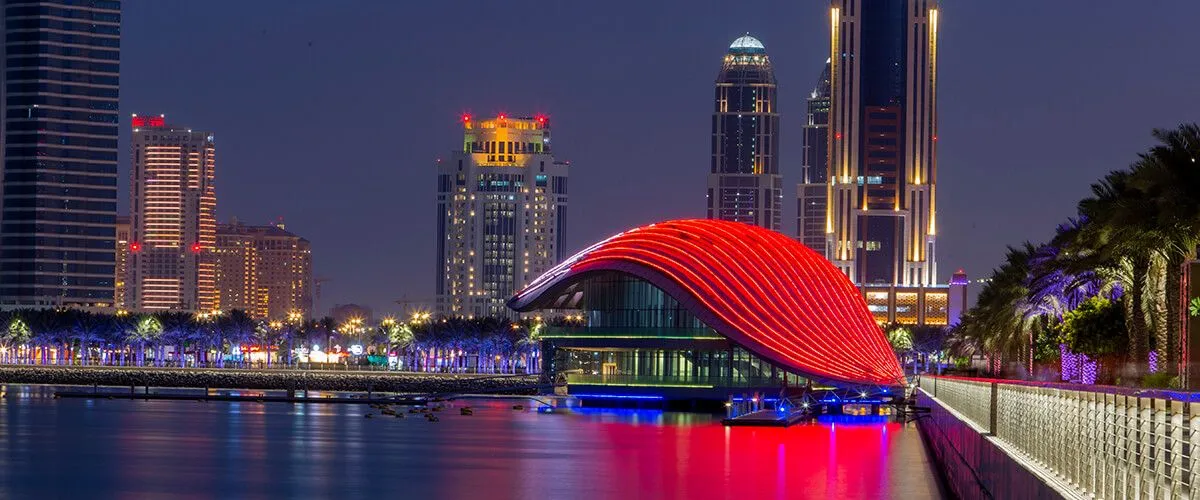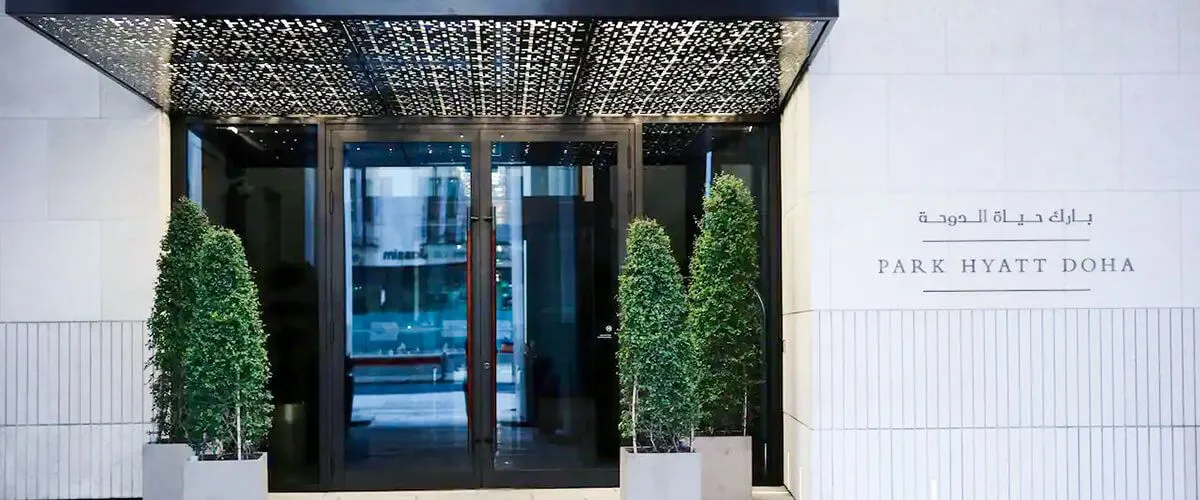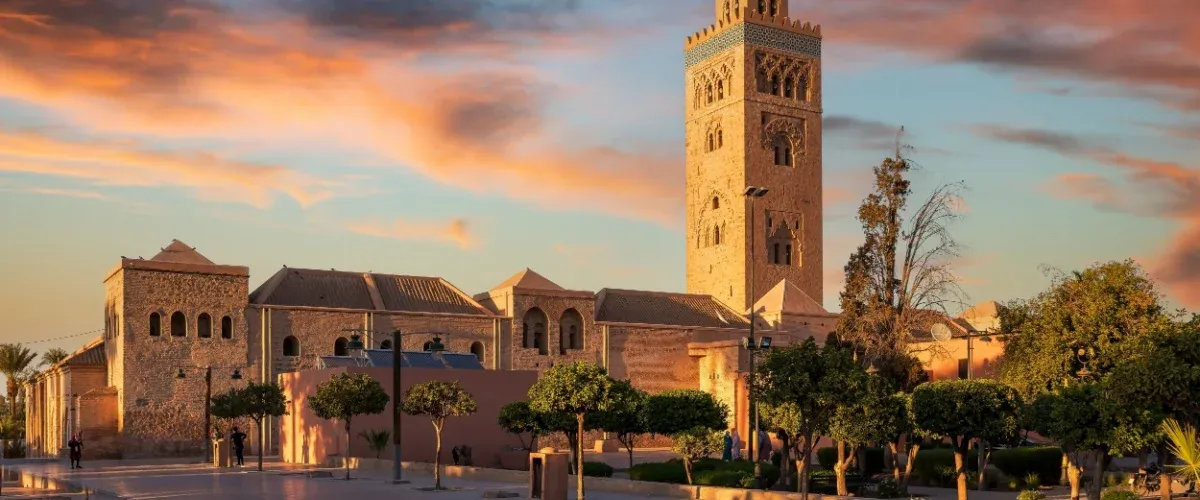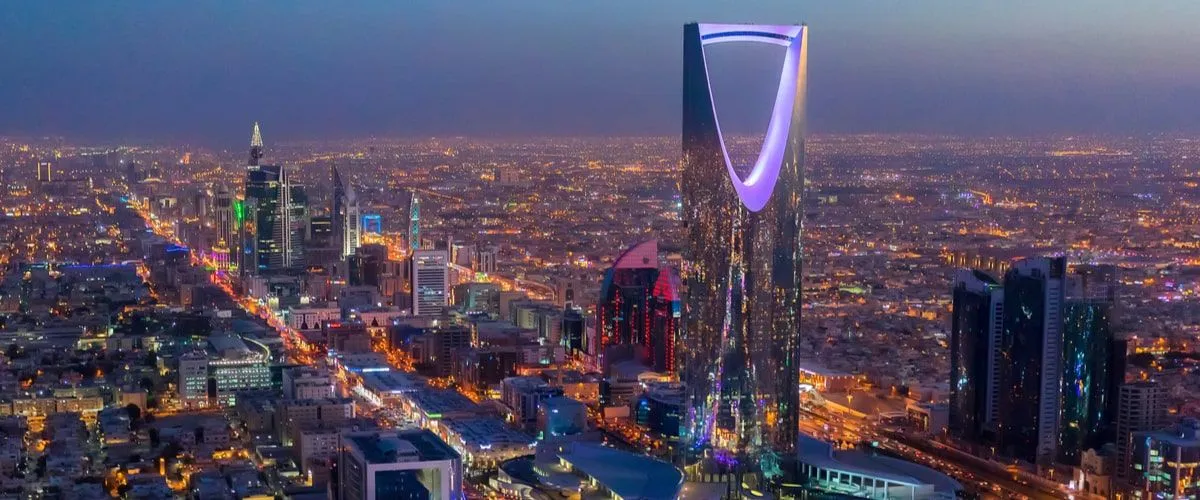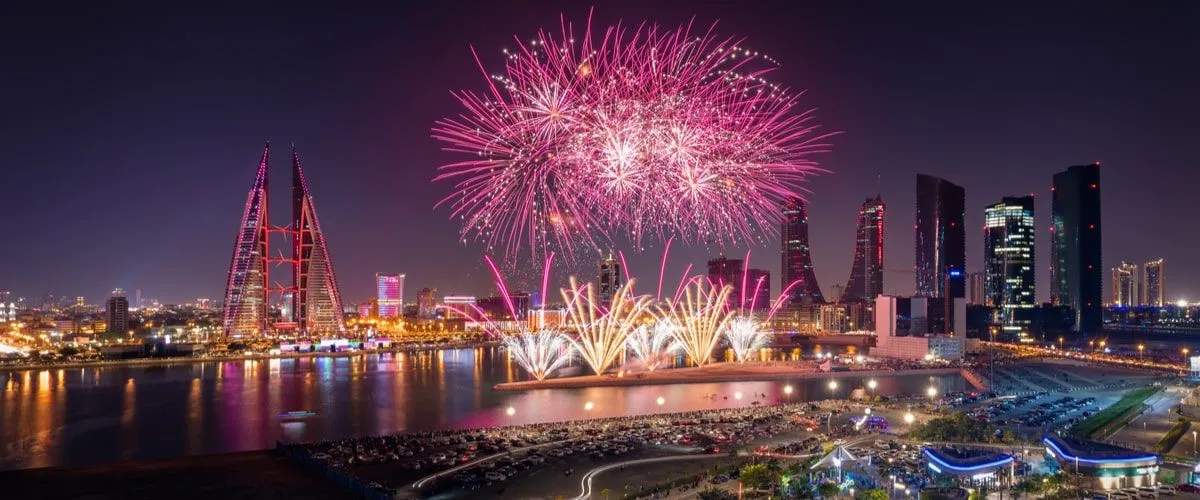The Lebanese zest for life and warmth have no deterrent, despite the repercussions of the Civil war. Rich in heritage, architecture and intellect, Beirut has a lot in store for its tourists. As the wild child of the Middle East, Beirut offers a glimpse into the stunning mosques, and bullet-scarred buildings with a colorful nightlife. It is often said that the city never dies and is filled with energy and resilience even after being conquered by invasive forces.
Right from the busy streets of Hamra to the chic pubs of Mar Mikhael, Beirut fulfils all the yearnings. Tourists can explore some of the crumbling Ottoman mansions, bullet- scarred French Mandate era apartments and modern structures. Tourists should attend some of the music festivals, tuck into some of the finest foods served at the eateries and discover the eerie charm that hovers above Downtown.
Top 11 Places To Visit in Beirut: A Perfect Middle Eastern Vacation
The places to visit in Beirut are rich in history and have a character of their own. The city has attracted tourists from around the world for its mosques and the old ruins of the Roman temples and bathhouse.
Did you know, that the capital of Beirut is said to be the “mother of laws” as it hosted the first law school under the Roman empire? It is true. One of the most interesting places people should discover are the Canaanite city wall, tombs from the Iron Age, Crusaders fortress walls, and Roman baths. Beirut has a lot in store for its tourists, waiting to be explored. With so much history tucked away in each corner of the city, when are you making holiday plans?
- Martyrs' Square
- Hamra Street
- Mohammad Al Amin Mosque
- Gemmayzeh street
- Corniche Beirut
- Greek Orthodox Cathedral of Saint George
- National Museum Of Beirut
- Byblos
- Tourist Landmark Of Resistance
- Raouche
- Grand Al Omari Mosque
1. Martyrs' Square
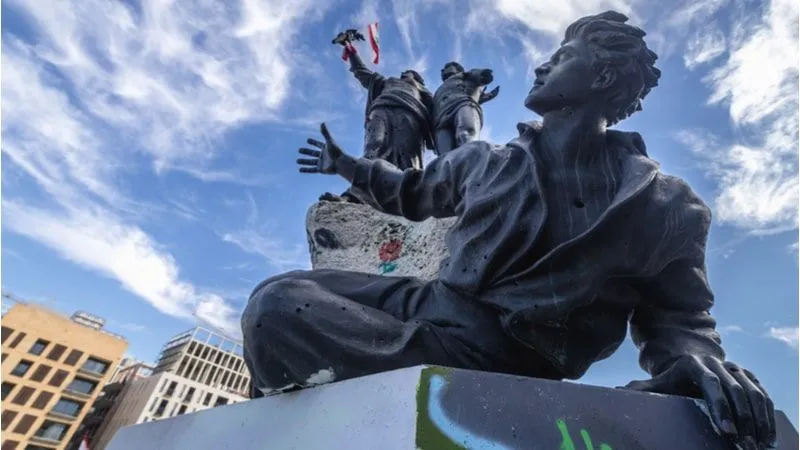
Here’s an interesting piece of information you should know. Nestled at the heart of downtown Beirut, Martyrs’ Square commemorates Lebanese nationalists hang during World War 1. The Square was once an open space and was called Sahat Al Burj or Tower Sqaure. It went on to become a meeting place with kiosks, a tramway and souks under the French mandate.
The square was adorned by a sculpture of a Muslim and Christian woman holding hands over a coffin. A local artist, Youssef Howayek had designed the scene as a testament to the locals. Back in 1956, the foundation of the stone’s present monument at the square was changed but it was only in 1960 that the monument was inaugurated. It is safe to say that it is definitely one of the many places to go in Beirut.
Location: VGW4+HV3, Beirut, Lebanon
Timings: 24 hours
2. Hamra Street
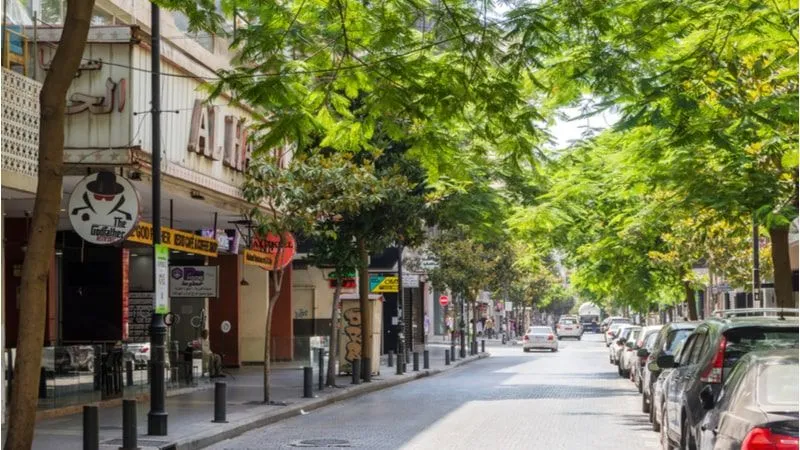
Hamra street was once a preeminent cultural, economic and intellectual center of the Arab world, found nestled at the heart of Beirut. Back in the day, journalists, politicians and leaders who were exiled from other nations stayed at Hamra street, which eventually led to the beginning of an opposition movement. The district never recovered after the Lebanese civil war.
The fading history of Hamra Street is preserved in Yazan Halwani’s wall- sized street murals. The blend of Arabic calligraphy with portraits of Lebanese and Arab figures is one of his signature styles. It is one of the most stunning tourist attractions in Beirut, people should ensure is on their list.
Location: Beirut
3. Mohammad Al Amin Mosque
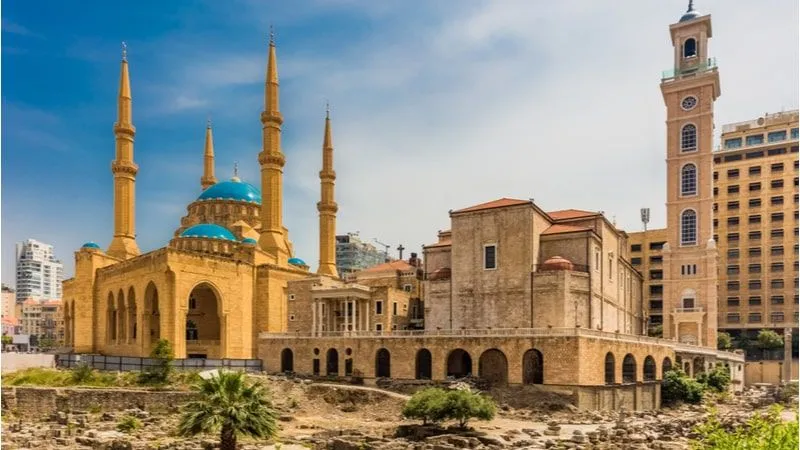
Have you been to the Mohammad Al Amin Mosque yet? If you haven’t then you have no idea what you're missing out on. The biggest mosque in Beirut, Mohammad Al Amin Mosque is a sight to behold, especially for its architecture. Tourists are often awe-struck by the 48-meter-high blue dome and 65-meter-high minarets along with the stunning chandeliers that bring out the beauty of the interiors.
With the lights turned on in the evening, the mosque comes to life. It is a feast for the eyes, as it is not something one gets to see every day. The mosque is one of the many places to see in Beirut. So, go ahead and have the best time of your life.
Location: Beirut, Lebanon
Suggested Read: Beaches in Beirut: Soak in The Balmy Weather of Lebanon At These Pristine Coastal Ends
4. Gemmayzeh Street
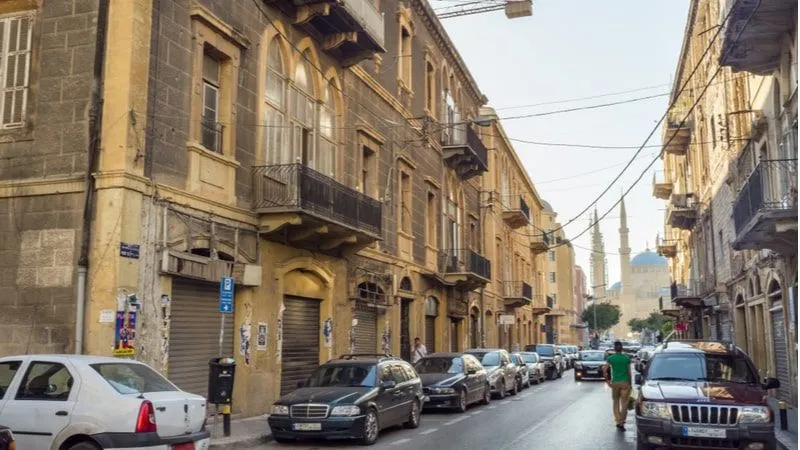
Gemmayzeh street is one of the oldest districts filled with stunning historic buildings from the French era. Known for its bars, pubs, cafes, restaurants and lounges, the street is one of the places to visit in Lebanon.
Do you want to know something interesting? The street is said to be a love letter to the contemporary and traditional flavors of Lebanon and Aotearoa seasons, found nestled at the back of the historic St Kevin’s arcade. Sounds like a place you would want to explore right? So, what are you waiting for? Make a plan and explore the street. It is worth the experience.
Location: Beirut
5. Corniche Beirut
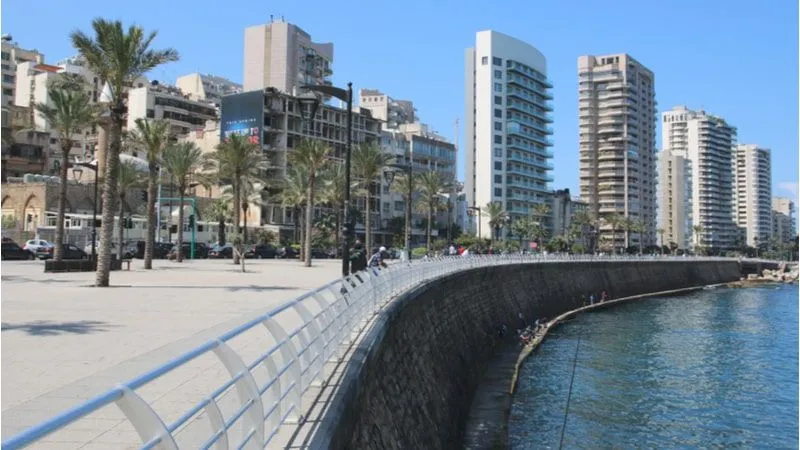
The corniche is a well-known seaside promenade home to several palm trees. Tourists visiting the place will be offered a stunning view of the Mediterranean Sea, Pigeon rock and Mount Lebanon.
One can even see the Old Ferris wheel to the north of the pigeon rock. The corniche was built during the French Mandate of Syria and Lebanon and its origins like in the Avenue des Francois. It has survived the bullet holes from the time of the Lebanese civil war. So, it is safe to say it is one of the best tourist places in Beirut to explore.
Location: Beirut, Lebanon
Suggested Read: Top Theme Parks In Istanbul Where You Can Let Your World Go Round
6. Greek Orthodox Cathedral of Saint George
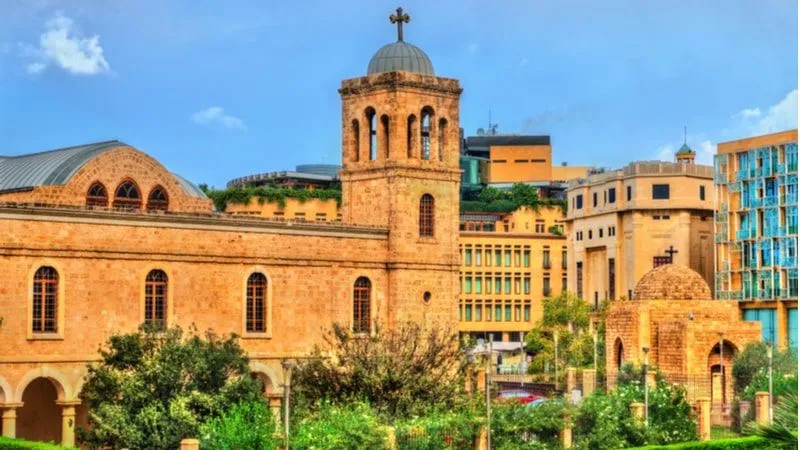
The parish constructed for the service and worship of God; Greek Orthodox Cathedral of Saint George is one of the many places to visit in the middle east. It is one of the oldest churches in Beirut, known for its stunning architecture.
So, when are you making plans to visit the Cathedral of Saint George? It is one of the most unusual places to explore, at least once while on vacation. So, what more can you ask for when it comes to having the best time of your life? It is worth the visit and will leave a lifetime of memories.
Location: VGW3+HX9, Beirut, Lebanon
Timings: 8 am- 3 am, Saturday- Sunday: closed
7. National Museum Of Beirut
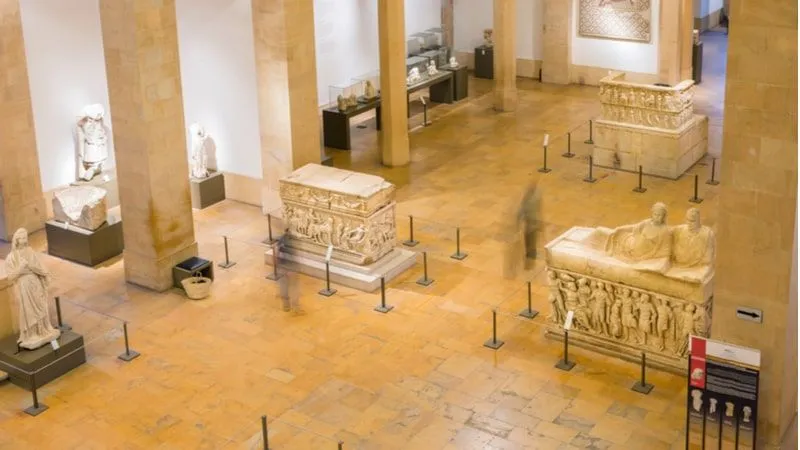
The archaeological museum in Lebanon, the national museum of Beirut is home to some of the finest collections from the 1st world war. The museum is home to at least 100,000 pieces which include antiquities from prehistoric times to the medieval Mamluk period.
Tourists will be fascinated by the Phoenician object collection. The collection at the museum was at risk during the Lebanese civil war back in 1975. Despite the damage caused to the historic Egyptian revival building and its objects, some of the items were saved. The museum was reconstructed and today attracts over a million tourists from around the world.
Location: VGH8+928, Beirut, Lebanon
Timings: 9 am- 2pm, Monday: closed
Suggested Read: Things to Do in Interlaken: Top-Rated Activities For Adventure Seekers
8. Byblos

The ancient seaport, Byblos, is found sitting on the coast of the Mediterranean Sea. It got its name from a Greek word, Papyrus and is one of the modest inhabited towns in the world. It is one of the many places to visit in Beirut for its contemporary archaeological excavations from the Neolithic period.
The chief harbor for the export of cedar and wood to Egypt, Byblos become a great trading center. It was called Kubna in old Egyptian and Gubla in Akkadian, the native language of Assyria. So, what are you waiting for? It is one of the most stunning places to explore at least once while on vacation in Byblos. So, what are you waiting for?
Location: Beirut, Lebanon
Suggested Read: Hajj 2022: A Guide to Attain Spirituality in the Holy City of Mecca Medina
9. Tourist Landmark Of Resistance
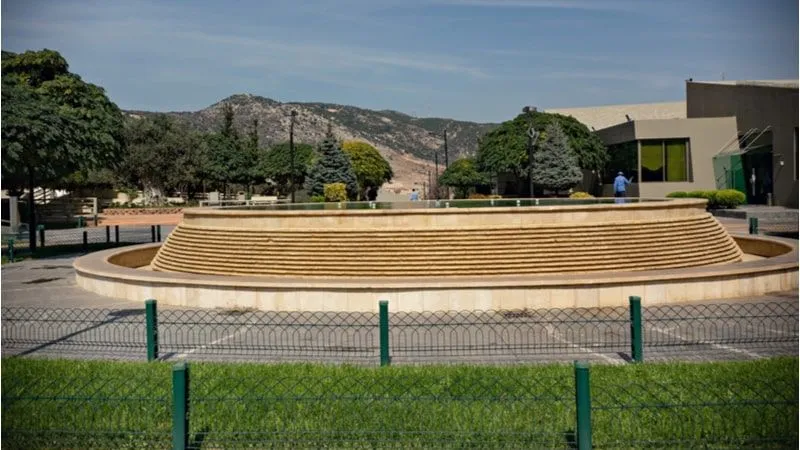
Have you ever read about the history of the tourist landmark of resistance? If you haven’t, then why not make plans to visit this historic site? Also known as the Hezbollah Resistance Museum, Tourists landmark of resistance is an open-air museum found sitting in the southern Lebanese city of Mlita. One of the most significant sites of the Lebanese resistance, the wartime museum is of the best places to visit in Beirut.
The museum was hotly contested between Hezbollah’s forces and the Israeli military between 1982- 2000, which in turn led to the retreat of the latter from Lebanon. Tourists come to visit the museum for its rich history every year.
Location: FG4G+H72, Mazraat Qalaat Meis, Lebanon
Timings: 9 am – 7 pm
Suggested Read: Places to visit in Medina: Experiencing Spirituality And Grandeur Of Arabian Beauty
10. Raouche
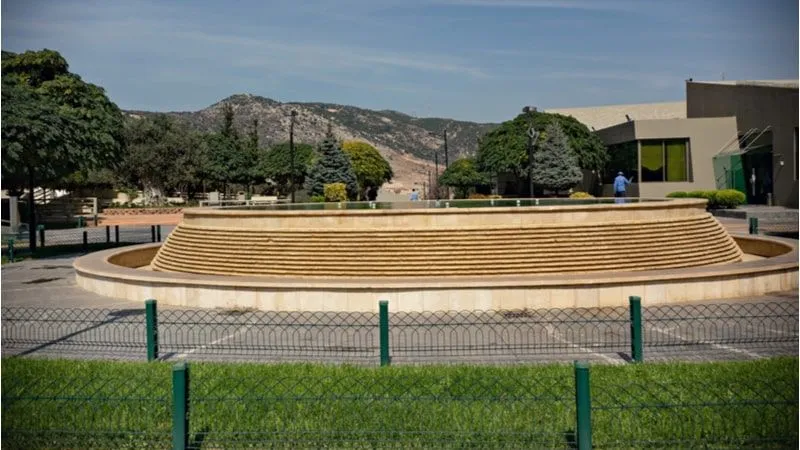
Tourists will get a glimpse of the concrete jungle to the east and the Pigeon rocks to the west, as they walk along the promenade in Raouche. The residential and commercial neighborhood in Beirut, Raouche is known for its Pigeon rocks, found nestled near the shore.
Consisting of the two huge rocks rising from the Mediterranean Sea, one of the Pigeon rocks resemble an arched door and stand out like majestic sentinels protecting the Beirut coast. One of the many things to do in Lebanon is to take pictures of the Mediterranean Sea. So, if you haven’t been yet, then what are you waiting for? It is one of the most unique places to explore at least once.
Location: Beirut
Suggested Read: Discover The Unmissable Taste in Saudi At Some Best Restaurants in Jeddah
11. Grand Al Omari Mosque
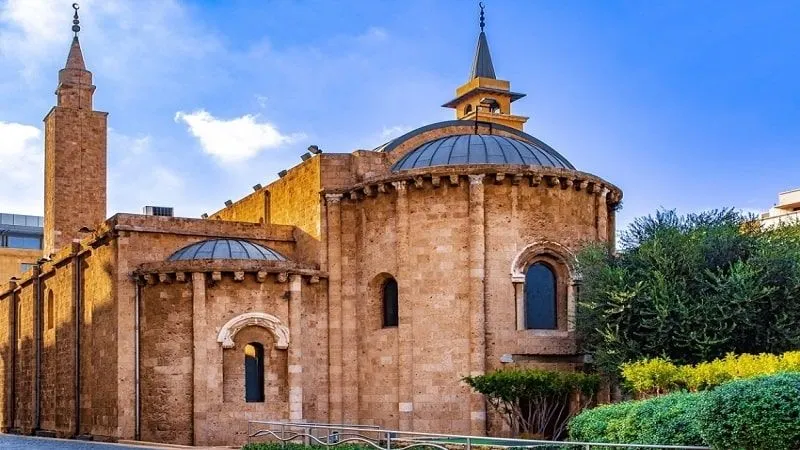
Named after the 2nd Islamic caliph, Umar, the Al- Omari Grand Mosque has seen the history of the city for years. Built on the ruins of the pagan temple, back in the 3rd century, after the Muslim conquest, the mosque was completely destroyed during an earthquake.
The mosque was named so as during the Umar Caliphate, the city was conquered. However, it has been given various names over a period of time. It was once called the Islamic conquest mosque under the Mamluks and was changed to the Yahya Mosque due to its spiritual location and the sacred relic thought that belonged to John the Baptist. So, if you ever go sightseeing in Beirut, then ensure the grand Al Omari Mosque is on your list.
Location: VGX4+42G, Beirut, Lebanon
Beirut has something for everyone, especially when it comes to discovering its history and culture. Tourists are given an insight into some of the stunning attractions tucked away in every corner of Beirut. With several places to visit in Beirut, tourists should book their tickets and have the best vacation ever. It is worth the experience and should be taken for granted. So, avail yourself of the best Lebanon tour packages and pack your bags for a memorable experience.
Places To Visit in Beirut - FAQs
Martyrs' Square, Hamra Street, Mohammad Al Amin Mosque, Gemmayzeh street, Corniche Beirut, Greek Orthodox Cathedral of Saint George, National Museum of Beirut, Byblos, Baalbek, Tourist Landmark of Resistance, Raouche, Grand Al Omari Mosque are some of the places to visit in Beirut.
Home to some of the finest collections from World War 1, the national museum of Beirut is an archaeological museum in Lebanon. The museum is special as it boasts of the most precious antiquities from the prehistoric times to the medieval Mamluk period.
Beirut is said to be the Paris of the middle east and has retained the old city charm as the French capital. Beirut is known for its Lebanese food.
People can spend at least 2 days in Beirut exploring every corner of the place. It should be on everyone’s bucket list of places to visit.
Baalbek is also as “Heliopolis or Sun city” and is one of the most breathtaking ancient sites in Lebanon. It has become an important pilgrimage site for the worship of Baal, the sky-God and his consort Astarte, the Queen of Heaven in Phoenician religion.
Home to some of the finest collections from the 1st world war and antiquities from prehistoric times to the medieval Mamluk period, the national museum of Beirut is one of the ideal places to visit.
Built during the French Mandate of Syria and Lebanon and its origins like in the Avenue des Francois, the corniche survived the bullet holes form the time of the Lebanese civil war.
Yes, Beirut is a safe place to visit for its attractions and cuisines. It is one the most stunning places to explore at least once.

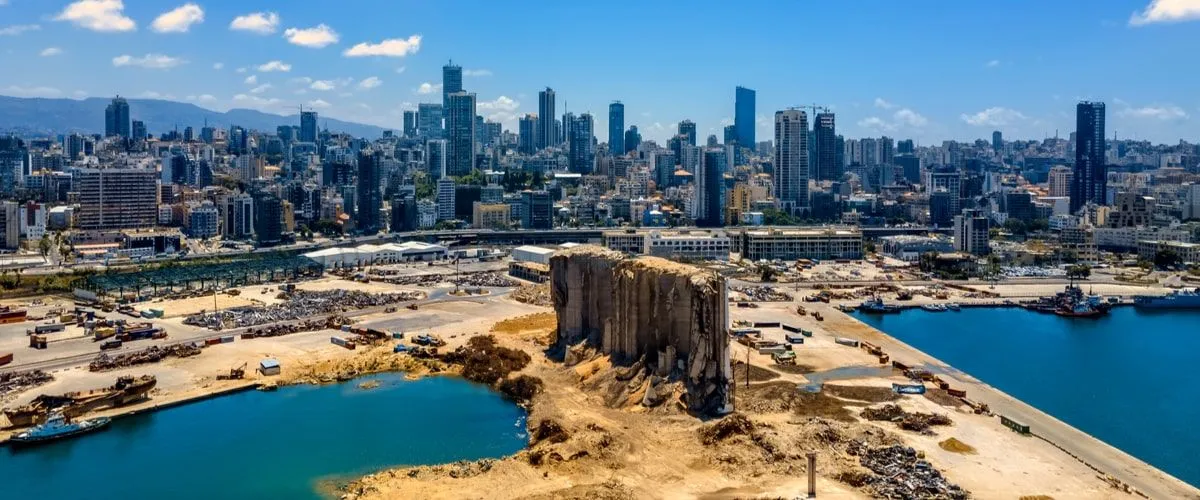


.webp)
.webp)
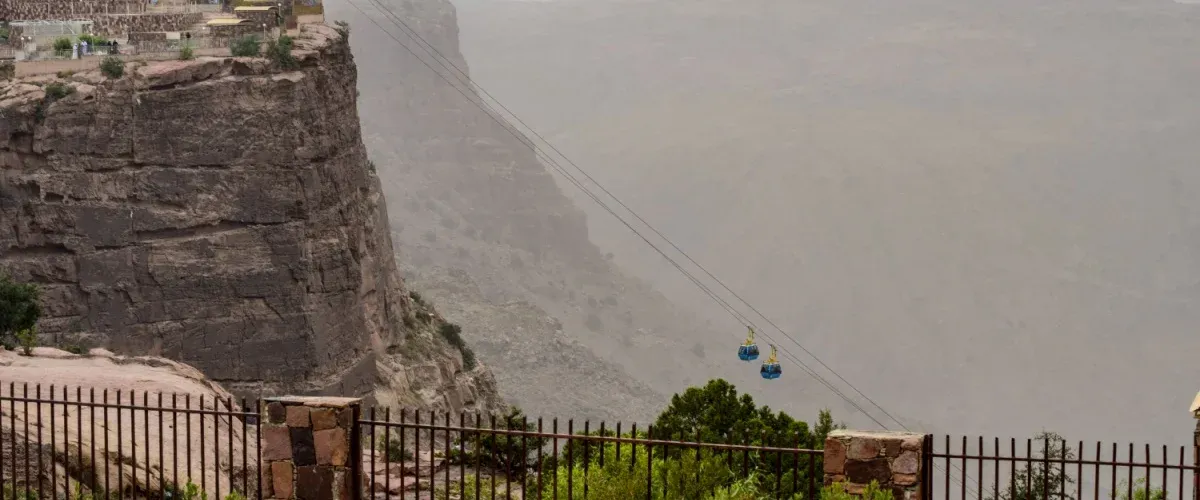
.webp)

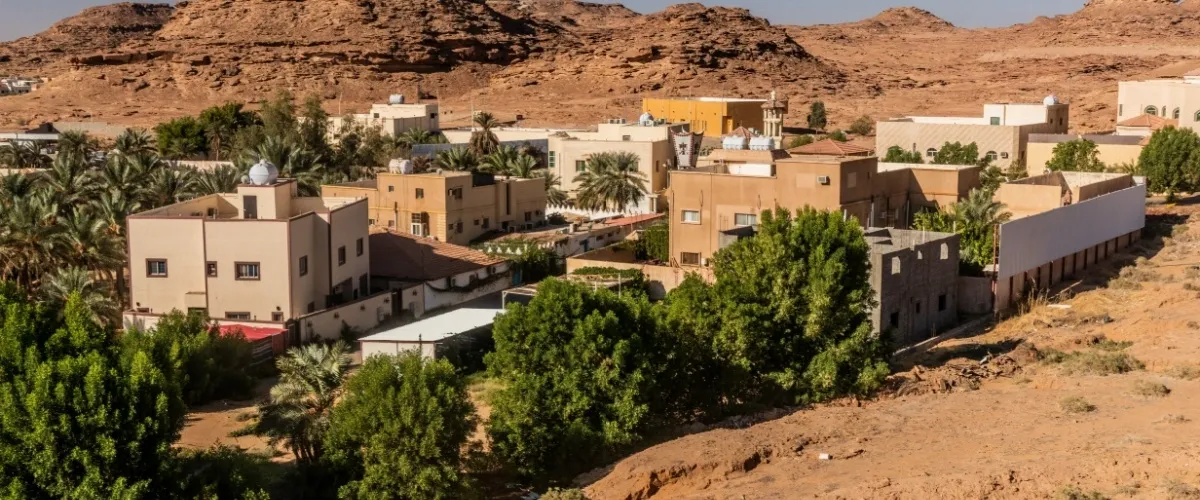
.webp)
.webp)
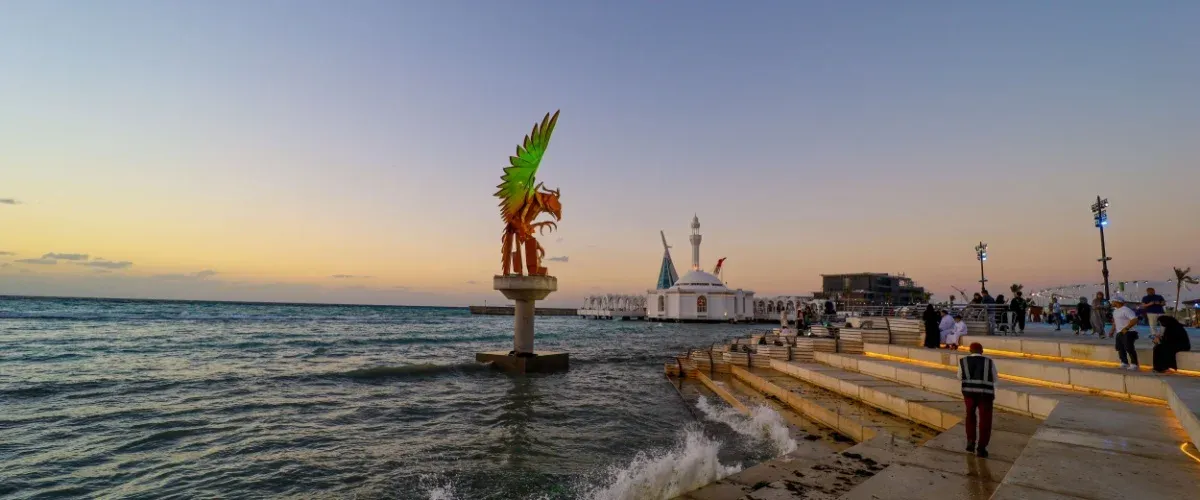
.webp)

